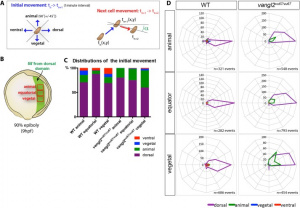User:Z5019526
| Student Information (expand to read) | ||||||||||||||||||||||||||||||||||||||||||||||||||||||||||||||||
|---|---|---|---|---|---|---|---|---|---|---|---|---|---|---|---|---|---|---|---|---|---|---|---|---|---|---|---|---|---|---|---|---|---|---|---|---|---|---|---|---|---|---|---|---|---|---|---|---|---|---|---|---|---|---|---|---|---|---|---|---|---|---|---|---|
| Individual Assessments | ||||||||||||||||||||||||||||||||||||||||||||||||||||||||||||||||
|
Please leave this template on top of your student page as I will add your assessment items here. Beginning your online work - Working Online in this course
Click here to email Dr Mark Hill | ||||||||||||||||||||||||||||||||||||||||||||||||||||||||||||||||
| Lab 1 Assessment - Researching a Topic | ||||||||||||||||||||||||||||||||||||||||||||||||||||||||||||||||
In the lab I showed you how to find the PubMed reference database and search it using a topic word. Lab 1 assessment will be for you to use this to find a research reference on "fertilization" and write a brief summary of the main finding of the paper.
| ||||||||||||||||||||||||||||||||||||||||||||||||||||||||||||||||
| Lab 2 Assessment - Uploading an Image | ||||||||||||||||||||||||||||||||||||||||||||||||||||||||||||||||
OK you are now in a group
Initially the topic can be as specific or as broad as you want. Chicken embryo E-cad and P-cad gastrulation[1] References
| ||||||||||||||||||||||||||||||||||||||||||||||||||||||||||||||||
| Lab 4 Assessment - GIT Quiz | ||||||||||||||||||||||||||||||||||||||||||||||||||||||||||||||||
|
ANAT2341 Quiz Example | Category:Quiz | ANAT2341 Student 2015 Quiz Questions | Design 4 quiz questions based upon gastrointestinal tract. Add the quiz to your own page under Lab 4 assessment and provide a sub-sub-heading on the topic of the quiz. An example is shown below (open this page in view code or edit mode). Note that it is not just how you ask the question, but also how you explain the correct answer. | ||||||||||||||||||||||||||||||||||||||||||||||||||||||||||||||||
| Lab 5 Assessment - Course Review | ||||||||||||||||||||||||||||||||||||||||||||||||||||||||||||||||
| Complete the course review questionnaire and add the fact you have completed to your student page. | ||||||||||||||||||||||||||||||||||||||||||||||||||||||||||||||||
| Lab 6 Assessment - Cleft Lip and Palate | ||||||||||||||||||||||||||||||||||||||||||||||||||||||||||||||||
| ||||||||||||||||||||||||||||||||||||||||||||||||||||||||||||||||
| Lab 7 Assessment - Muscular Dystrophy | ||||||||||||||||||||||||||||||||||||||||||||||||||||||||||||||||
| ||||||||||||||||||||||||||||||||||||||||||||||||||||||||||||||||
| Lab 8 Assessment - Quiz | ||||||||||||||||||||||||||||||||||||||||||||||||||||||||||||||||
| A brief quiz was held in the practical class on urogenital development. | ||||||||||||||||||||||||||||||||||||||||||||||||||||||||||||||||
| Lab 9 Assessment - Peer Assessment | ||||||||||||||||||||||||||||||||||||||||||||||||||||||||||||||||
| ||||||||||||||||||||||||||||||||||||||||||||||||||||||||||||||||
| Lab 10 Assessment - Stem Cells | ||||||||||||||||||||||||||||||||||||||||||||||||||||||||||||||||
As part of the assessment for this course, you will give a 15 minutes journal club presentation in Lab 10. For this you will in your current student group discuss a recent (published after 2011) original research article (not a review!) on stem cell biology or technology.
| ||||||||||||||||||||||||||||||||||||||||||||||||||||||||||||||||
| Lab 11 Assessment - Heart Development | ||||||||||||||||||||||||||||||||||||||||||||||||||||||||||||||||
| Read the following recent review article on heart repair and from the reference list identify a cited research article and write a brief summary of the paper's main findings. Then describe how the original research result was used in the review article.
<pubmed>26932668</pubmed>Development | ||||||||||||||||||||||||||||||||||||||||||||||||||||||||||||||||
| ||||||||||||||||||||||||||||||||||||||||||||||||||||||||||||||||
How would you identify your type in a group?
I found myself falling under multiple types. However, people who have worked with me in the past have always said that I am enthusiastic and diligent. For this reason, I would classify myself as the Resource Investigator. I'm always excited to do new things and integrate things from outside the box. I don't think I'm very creative with brainstorming new ideas, but with what ideas my teammates do bring, I would try my best to make it happen. It's true how it says that we start off great but tend to lose momentum towards the end. I find that this happens to me a lot, but I always strive to finish off just as enthusiastic as how I started.
What was the most interesting thing you learnt in the fertilisation lecture?
Prior to studying Embryology, I studied Histology and Evolutionary and Functional Biology where I first heard of the process of fertilisation. So, I was familiar with some words/phrases such as 'corpus luteum', 'antrum' and 'the secretory phase', however, I was overwhelmed by the detail explained in the fertilisation lecture. The previous subjects only provided a brief summary and would continue on the course. I also never heard of a lot of the words used in the lecture such as 'gametogenesis' and the process of 'patterning' and 'gastrulation', so there's definitely a lot for me to study. The most interesting thing I learnt in the lecture was how the follicle enlarges, ruptures and releases the oocyte, surrounding cells and fluid in ovulation but not all the follicle gets released. The remainder of the follicle remains in the uterus goes to form corpus luteum, which plays a big role in pregnancy as it secretes progesterone.
Lab Attendance
Z5019526 (talk) 14:42, 12 August 2016 (AEST)
Z5019526 (talk) 13:13, 19 August 2016 (AEST)
Z5019526 (talk) 13:26, 26 August 2016 (AEST)
Lab 1 Assessment
<pubmed>25624660</pubmed>
For an infertile couple, in vitro fertilisation (IVF) can be the solution. The purpose of this article was to explore the most common cause of infertility in both males and females; and to investigate the reasons why many couples, who seem strongly motivated at the beginning, end up discontinuing from IVF cycles in India. In this study, there were 88 cases of IVF. This consisted of couples aged between 20-40 years old who attended IVF clinics during 2009-2012, was in their first cycle of IVF treatment and whose last and only option left was IVF. The research was conducted over a 4 month period from May - August 2013.
In this study, it was found that 21% of the female participants had tubal pathology, making it the most common cause of infertility in women. Another important factor of infertility that should be considered is age. The mean age of the women was 30.9 years old, with 34% between 31-35 years old and 16% between 36-40 years old. If these female participants underwent IVF earlier, their chances of a successful outcome would have increased as age is a significant factor for a positive pregnancy. Oligo-asthenospermia was found to be the most dominant cause among male participants (13%). In addition, poor lifestyle habits such as smoking and stress could have a negative effect on sperm quality, quantity and mobility. The study also concluded that financial burden was the main reason behind IVF cycle drop out, with 65% of the couples discontinuing the treatment due to its high expenses. However, this came as a surprise as only 19% of women were classified under the low-income group and more than half (52%) belonged to the middle-income group. Other minor reasons why couples backed out from the IVF cycle was because 6.25% took on alternative methods such as adoption. An important note to take into consideration is that the infertile couples also go though stress, worry and agony, and unfortunately, those feelings cannot be quantitated.
| Mark Hill 18 August 2016 - You have added the citation correctly and written a good brief summary of the article findings. While the paper does relate to fertilisation, it is not linked to the biological process, please stay focussed on the course topics. | Assessment 4/5 |
Lab 2 Assessment
The cell behaviours and its different locations down the AP embryonic axis[1]
| Mark Hill 29 August 2016 - All information Reference, Copyright and Student Image template included with the file and citation referenced on your page here.
There are some formatting issues in the file information box, that have not affected your final mark. See my comments with the file. |
Assessment 5/5 |
Lab 3 Assessment
| Mark Hill 31 August 2016 - Lab 3 Assessment Quiz - Mesoderm and Ectoderm development. | Assessment 2.5/5 |
Lab 4 Assessment



